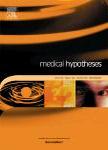版权所有:内蒙古大学图书馆 技术提供:维普资讯• 智图
内蒙古自治区呼和浩特市赛罕区大学西街235号 邮编: 010021

作者机构:Shaanxi Normal Univ Coll Life Sci Xian 710062 Peoples R China Univ N Carolina Dept Nanosci Joint Sch Nanosci & Nanoengn Greensboro NC 27401 USA
出 版 物:《MEDICAL HYPOTHESES》 (医学假说)
年 卷 期:2013年第80卷第2期
页 面:131-133页
核心收录:
学科分类:1001[医学-基础医学(可授医学、理学学位)] 10[医学]
基 金:China National Natural Science Foundation
主 题:Tobacco Use Hepatocarcinogenesis Tobacco Products Hijacking DDX3X gene Human-centered computing Carcinogenesis
摘 要:Chronic hepatitis C virus (HCV) infection is a well-recognized risk factor for hepatocellular carcinoma (HCC). As a co-risk factor, the role of tobacco use in HCV-driven carcinogenesis and relevant underlying mechanisms remain largely unclear. The latest discoveries about HCV replication have shown that HCV RNA hijacks cellular miRNA-122 by forming an Ago2-HCV-miR-122 complex that stabilizes the HCV genome and enhances HCV replication. Our previous work has demonstrated that aqueous tobacco smoke extract (TSE) is a potent activator of HIV replication via TSE-mediated viral protection from oxidative stress and activation of a set of genes that can promote viral replication. Since HCV is, like HIV, an enveloped virus that should be equally susceptible to lipid peroxidation, and since one of the TSE-upregulated genes, the DDX3 helicase, is known to facilitate HCV replication, we hypothesize that (1) tobacco use can similarly enhance HCV viability and replication, and promote HCC progression by up-regulation of DDX3, and (2) by competing for binding with miR-122 as a competing endogenous RNA (ceRNA), HCV replication can liberate miR-122 s direct target, oncogenic gene cyclin G1 (CCNG1);furthermore, simultaneous tobacco use can synergistically enhance this competing effect via HCV upregulation. Our hypotheses may lay a foundation for better understanding of carcinogenesis in HCV-driven HCC and the potential role of tobacco as a cofactor. Disrupting the HCV ceRNA effect may provide a new strategy for designing anti HCV/HCC drugs. (c) 2012 Elsevier Ltd. All rights reserved.